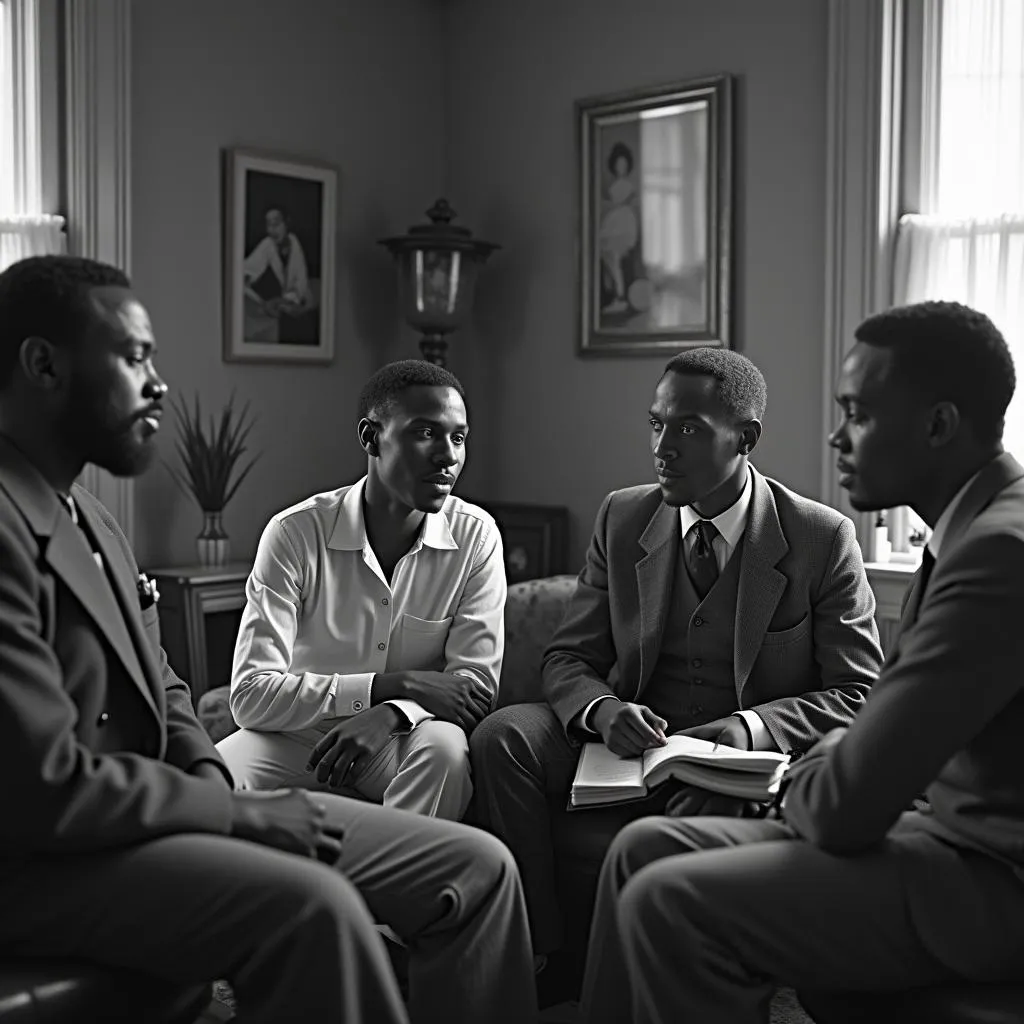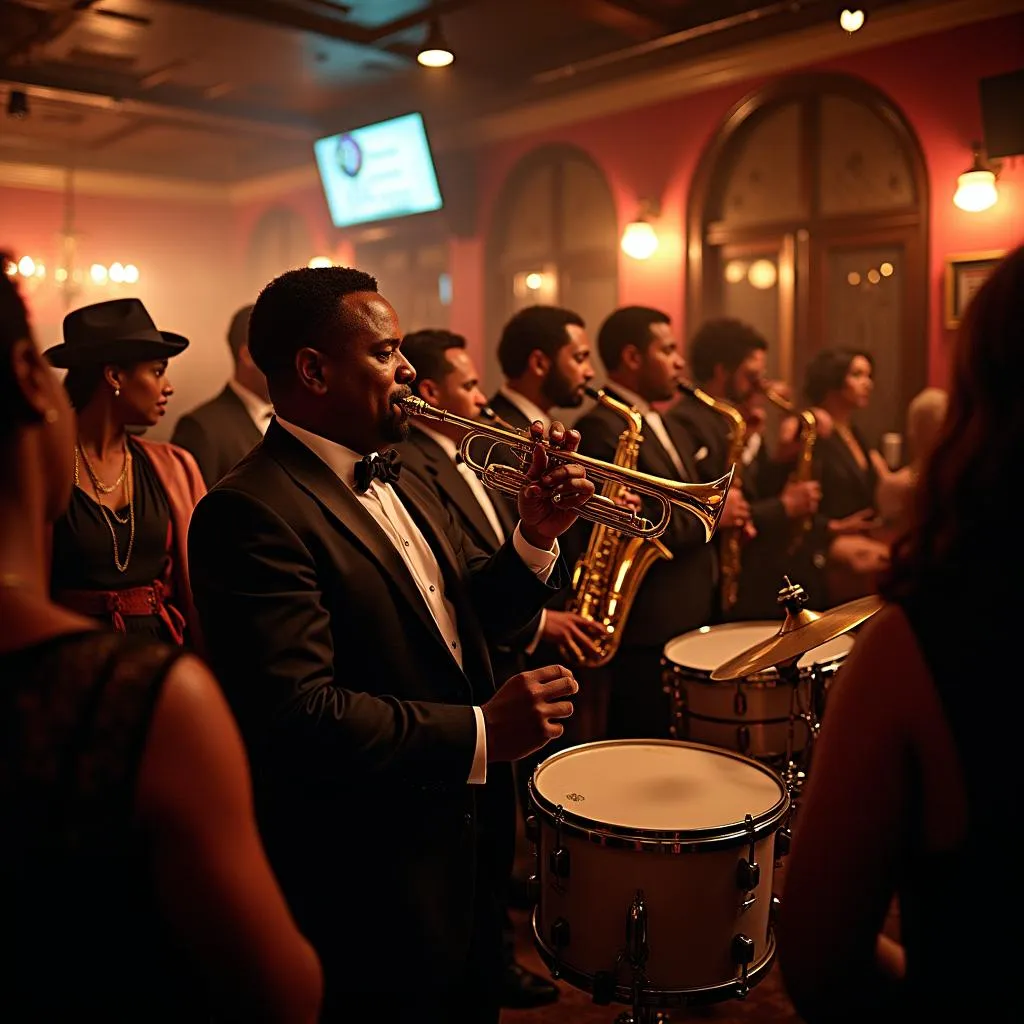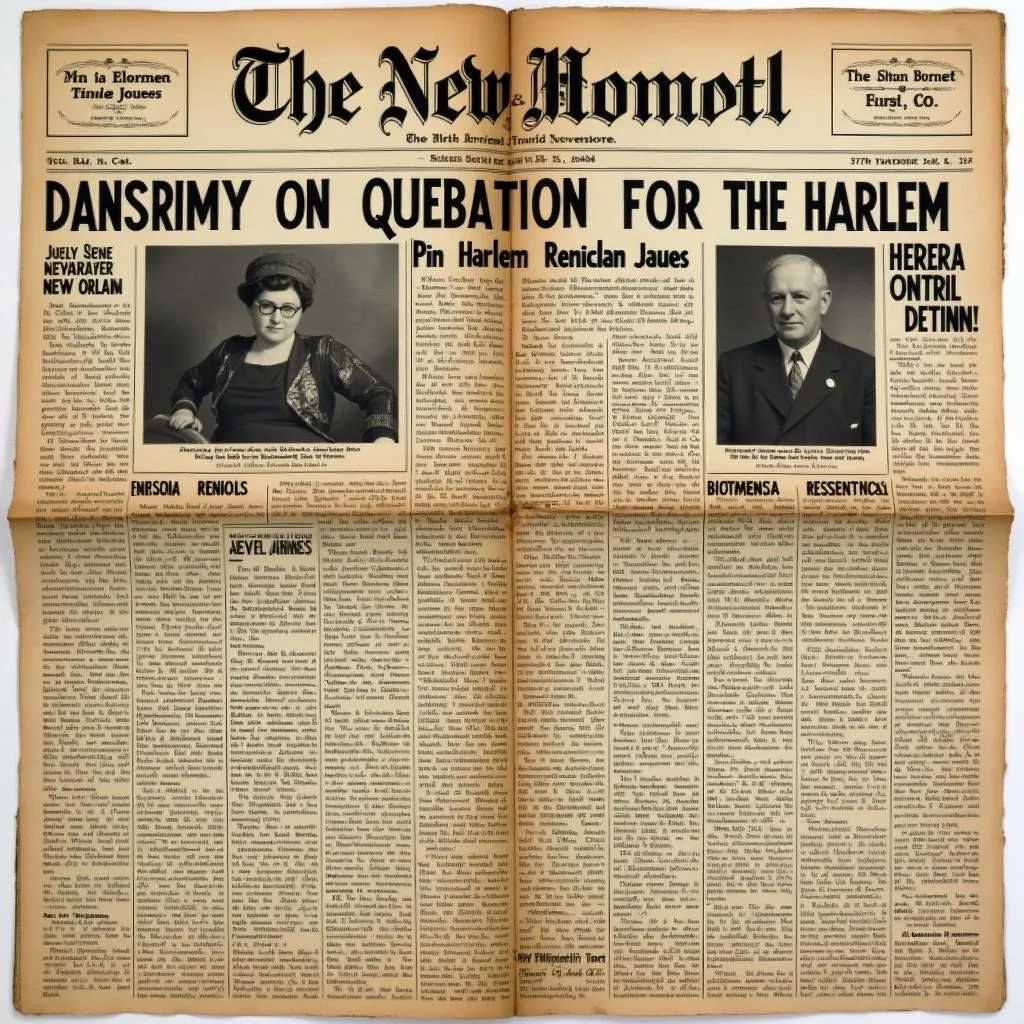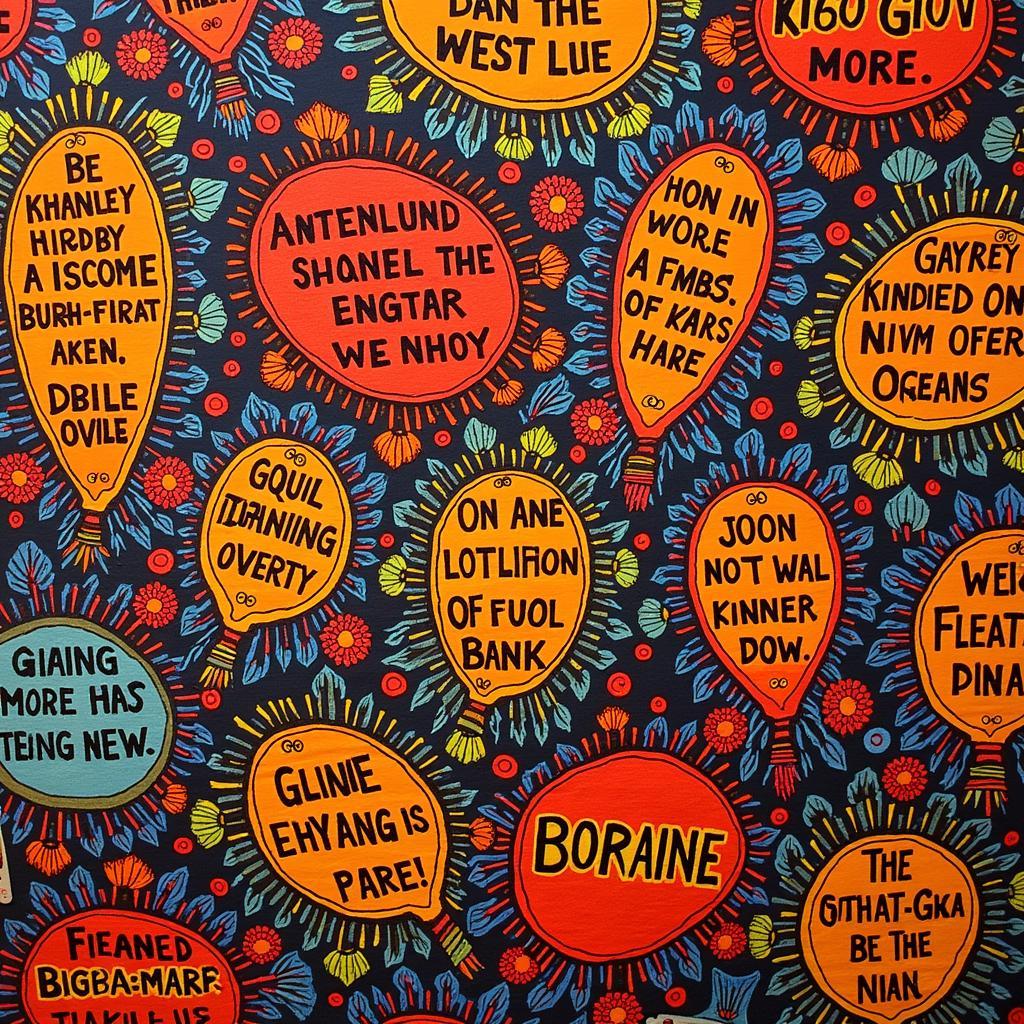The Flourishing of African American Life in the 1920s: An Era of Artistic Innovation and Cultural Awakening
The 1920s marked a transformative period in African American life, particularly in the urban centers of the North. This era, often referred to as the Harlem Renaissance, witnessed an unprecedented flourishing of artistic expression, cultural pride, and intellectual ferment. African Americans in the 1920s challenged racial stereotypes, celebrated their heritage, and boldly articulated their aspirations for equality and social justice.
 African American artists of the Harlem Renaissance
African American artists of the Harlem Renaissance
The Great Migration and the Rise of Urban Black Communities
A significant factor contributing to the vibrancy of African American Life In The 1920s was the Great Migration. Driven by the promise of economic opportunity and fleeing the brutal realities of Jim Crow segregation in the South, millions of African Americans migrated to northern cities like New York, Chicago, and Detroit. This mass movement led to the growth of vibrant black communities, particularly in neighborhoods like Harlem in New York City, which became a focal point for African American culture and activism.
The concentration of African Americans in urban centers fostered a sense of collective identity and solidarity. It provided fertile ground for the exchange of ideas, artistic collaborations, and the development of a new cultural consciousness. This newfound sense of community and shared experience found powerful expression in the artistic and intellectual movements of the Harlem Renaissance.
The Harlem Renaissance: A Cultural Explosion
The Harlem Renaissance, though centered in Harlem, was a national phenomenon that resonated far beyond the geographical confines of this New York City neighborhood. It represented a creative awakening in literature, music, art, and theater, fueled by the desire to express the complexities of the African American experience.
 African American jazz musicians performing in a 1920s nightclub
African American jazz musicians performing in a 1920s nightclub
This cultural movement produced some of America’s most enduring artistic icons. Writers like Langston Hughes, Zora Neale Hurston, and Claude McKay explored themes of race, identity, and social justice in their works. Jazz, with its improvisational spirit and syncopated rhythms, became synonymous with the era, propelled by legendary figures like Duke Ellington, Louis Armstrong, and Bessie Smith.
The Harlem Renaissance was not merely a celebration of artistic talent; it was a conscious effort to redefine the image of African Americans in the eyes of a nation grappling with racial prejudice and inequality. Through their art, these artists challenged prevailing stereotypes, asserted their humanity, and demanded recognition for their contributions to American culture.
Navigating a Society Still Steeped in Racism
The vibrant cultural and intellectual life of African Americans in the 1920s existed alongside the harsh realities of racism and discrimination. Despite the strides made during the Harlem Renaissance, African Americans continued to face segregation, disenfranchisement, and racial violence.
The resurgence of the Ku Klux Klan, lynchings, and race riots served as stark reminders of the deeply ingrained racism that permeated American society. Nevertheless, African Americans in the 1920s refused to be silenced. They formed organizations like the NAACP, led by figures like W.E.B. Du Bois, to fight for civil rights and social justice.
The 1920s saw the emergence of new voices and ideologies within the African American community. Marcus Garvey, a Jamaican-born activist, advocated for Black nationalism and Pan-Africanism, urging African Americans to take pride in their heritage and strive for self-determination.
A Legacy of Resilience, Creativity, and the Ongoing Struggle for Equality
The 1920s left an indelible mark on American history and culture. The artistic innovations, intellectual ferment, and social activism of this era laid the groundwork for the Civil Rights Movement of the 1950s and 1960s.
 African American newspaper from the Harlem Renaissance
African American newspaper from the Harlem Renaissance
The legacy of African American life in the 1920s is one of resilience, creativity, and the unwavering pursuit of equality. The Harlem Renaissance, in particular, stands as a testament to the transformative power of art and the enduring human spirit in the face of adversity. This era continues to inspire generations with its message of hope, resistance, and the belief in a more just and equitable future.
FAQs About African American Life in the 1920s
1. What were some of the key factors that led to the Harlem Renaissance?
The Harlem Renaissance was fueled by a confluence of factors, including the Great Migration, the rise of a new Black middle class, and a growing sense of racial pride and consciousness.
2. How did the Harlem Renaissance impact American culture?
The Harlem Renaissance had a profound impact on American culture, introducing new artistic forms, challenging racial stereotypes, and paving the way for greater representation of African Americans in the arts.
3. What were some of the challenges faced by African Americans during the 1920s?
Despite the cultural vibrancy of the era, African Americans continued to face significant challenges, including racial segregation, discrimination, and violence.
4. Who were some of the most influential figures of the Harlem Renaissance?
The Harlem Renaissance produced numerous influential figures, including writers like Langston Hughes and Zora Neale Hurston, musicians like Duke Ellington and Louis Armstrong, and activists like W.E.B. Du Bois and Marcus Garvey.
5. How does the legacy of the 1920s continue to resonate today?
The legacy of African American life in the 1920s continues to resonate today, inspiring activism, artistic expression, and the ongoing fight for social justice and racial equality.
For those interested in exploring the rich tapestry of African American literature, you can find a diverse range of titles in our African American fiction collection.
